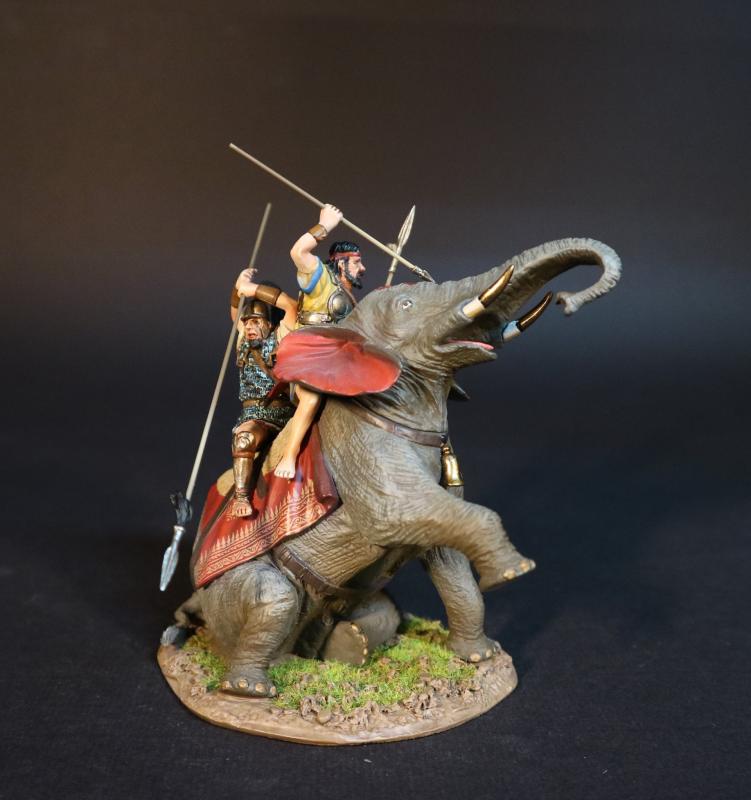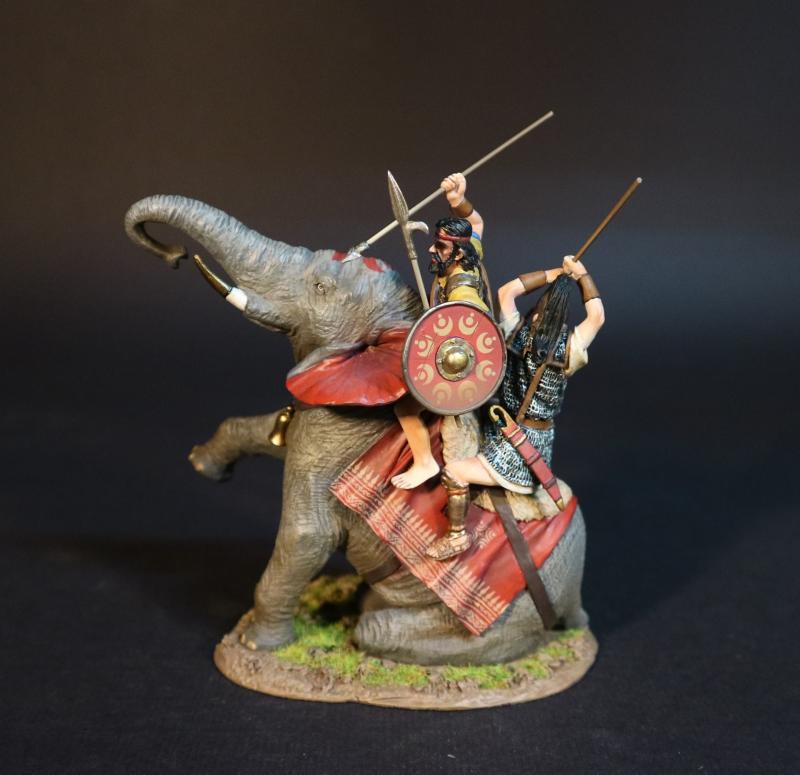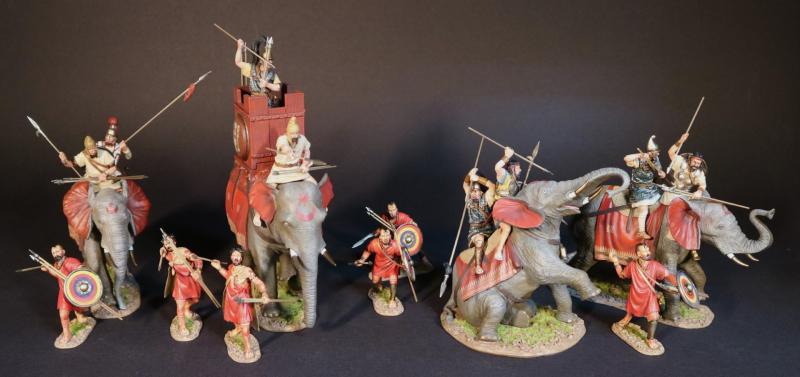Seated Trumpeting Carthaginian African Forest War Elephant, The Carthaginians, The Battle of Zama, 202 BCE, Armies and Enemies of Ancient Rome--elephant and two seated figures
$208.00
Item Number: CTE-04
Seated Trumpeting Carthaginian African Forest War Elephant, The Carthaginians, The Battle of Zama, 202 BCE, Armies and Enemies of Ancient Rome
ARMIES AND ENEMIES OF ANCIENT ROME
THE CARTHAGINIANS
THE BATTLE OF ZAMA, 202 BCE
Carthage learnt the use of elephants from fighting in Sicily against Pyrrhus of Epirus between 278 and 276 BCE. The Carthaginians quickly realized they could easily acquire African Forest Elephants which inhabited North Africa in great numbers. It was much easier to capture these elephants than import elephants from India.
It was not long before Carthage had the most powerful elephant corps in the Mediterranean world, with stables housing up to 300 elephants located in the capital. They would replace chariots as the Carthaginian’s main striking force.
The elephants primarily used by the Carthaginian armies were of the now extinct smaller African kind. They stood between 2m and 2.5m tall. These elephants were taken from the now long vanished forests of Numidia. Their primary use was to terrify the uninitiated man and horse, and they carried a single rider known as a mahout, who was armed with a javelin. Each elephant could also carry an additional soldier armed with javelins or a long spear.
It is believed that the elephants deployed at Zama did not carry infantry in howdahs on their backs. Most scholars doubt it as the forest species being smaller than Asian elephants, it is believed could not carry the additional weight. Any elephants with towers were believed to have been imported from India. However, the Egyptian Ptolemies as well as Numidian kings are recorded as having put towers on forest elephants, and the Roman poet Juvenal mentions towers on Hannibal’s elephants.
In 218 BCE, the Second Punic War began and the famous Carthaginian general Hannibal traversed the Alps to invade Italy with an army that included 37 war elephants, which were believed to be mostly African. In the course of that arduous crossing, many men, cavalry and draught animals were lost, but apparently (according to ancient sources) not a single elephant. The elephants were to contribute to Hannibal’s first victory in Italy, on the Trebbia river, where they frightened the Roman cavalry and routed the Roman auxiliaries. Shortly after the battle, all but one elephant died. It is not known why? Maybe the after effects of exhaustion suffered during the crossing, or some disease incurred during the campaign, are all distinct possibilities.
The Battle of Zama in 202 BCE proved to be the crucial encounter of the Second Punic War. The Carthaginians, led by Hannibal, met the invading Roman army under the command of Scipio, who afterwards was titled “Africanus”.
The armies were equally matched, but Hannibal had a force of 80 war elephants. The Carthaginian army had been assembled in a hurry, was manned with a considerable number of recruits and the recently caught elephants had not been fully trained.
Both generals concentrated their infantry in the centre, with cavalry on the wings. Hannibal stationed the 80 war elephants in front of his infantry, and started the battle by ordering the elephants to attack.
Scipio had anticipated this attack and had set up his infantry in the usual standard three lines, but instead of the draught board formation, he placed the maniples in rows with gaps between them. The lightly armed velites preceded the infantrymen, and were prepared to meet the advancing elephants.
During the attack, the Romans blew their trumpets and horns, and beat their shields with their swords, creating an unbearable noise. Some elephants, frightened by the cacophony of noise, pivoted and rushed into Hannibal’s Numidian cavalry, causing confusion, which Scipio’s own Numidian allies exploited to completely rout Hannibal’s left wing. The rest of the elephants clashed with the Roman velites, and were drawn into the gaps in the Roman rows, where they were isolated by the velites and captured.
Because of these Roman tactics, the elephants did not seriously harm the Romans, whose cavalry having gained victory on the flanks, attacked the Carthaginian infantry in the rear, destroying Hannibal’s remaining army.
According to Appian, at Zama, Hannibal’s elephants were equipped to inspire the enemy with horror, and it is believed they were draped in blood red cloth, and their ears painted red.
Defeated in the second Punic War, Carthage was forbidden to keep war elephants.
Released in MARCH 2024.


